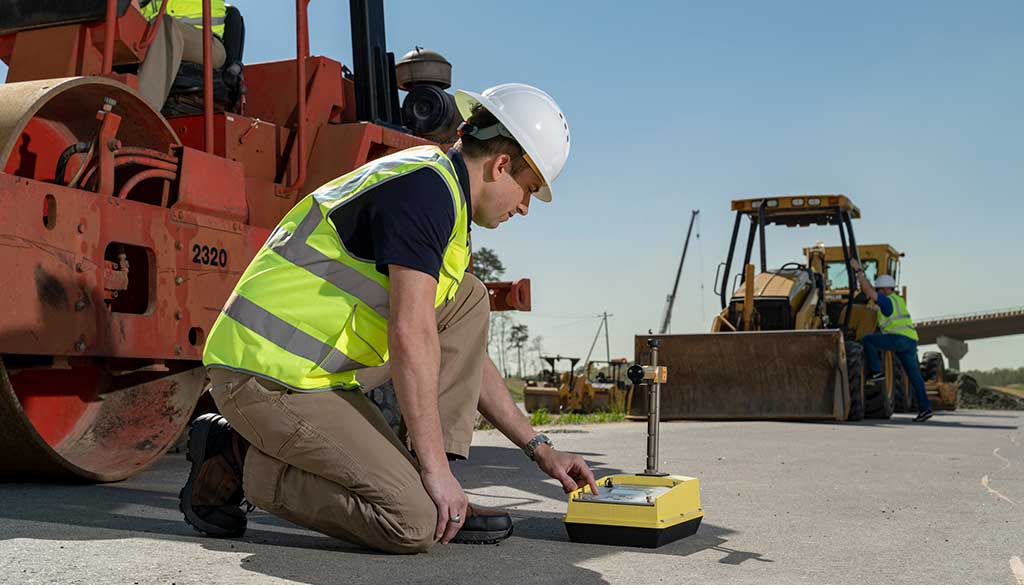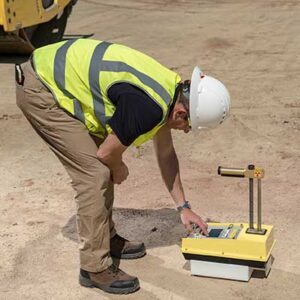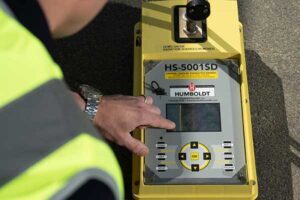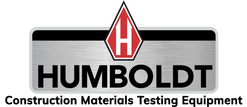How to Measure Field Density of Soil Using Nuclear Density Gauges
- November 18th, 2020
- Category: Equipment Guides

Soil density is an important factor to most construction projects and provides critical support for buildings, roads, pavements and other structures. Soil is frequently disturbed during the development process resulting in the introduction of air or water into the ground. Any water particles or air voids must be removed from the soil to ensure proper support.
Compacting the soil, with equipment appropriate for each project, will eliminate voids and remove paths through which water can flow. The quality of the compaction efforts must be tested once complete to ensure the stability of the structure being built.
A nuclear densometer or soil density gauge is an instrument used in the field for determining the density of compacted materials. The nuclear densometer measures the interaction of gamma radiation with the ground to calculate the density. Most densometers use either direct transmission or measure with the backscatter method to determine density.
Equipment Required
A nuclear densometer is required for the procedure. These instruments contain radioactive materials, which may be hazardous if used improperly. It is recommended that users participate in a radiation safety and applications training program presented by competent instructors.

Site Preparation
Clear all loose debris from any site to be measured prior to performing any testing. If measuring on soil, the area should be leveled using a scraper plate until you have a flat surface to take the measurement. The scraper plate is used as a guide for the drill rod. Place the scraper plate over your site and while holding it in place with your foot, drive the rod to a depth of at least 50 mm (2 inches) deeper than the measurement depth.
Positioning the Gauge
Carefully place your gauge over the prepared site.
- Backscatter: Make the gauge as flush to the surface as possible. Release the Latch by pressing the trigger into the handle and pushing the handle down to the first notch for backscatter.
- Direct Transmission: Release the latch by pressing the trigger into the handle and pushing the handle down to the correct predetermined depth. Pull the gauge toward the control panel end to force the source rod against the side of the prepared hole. This is important since a void could exist between the rod tip and side of the hole.

Taking the Measurement Count
Follow the instruction on the control panel of the Nuclear Density Gauge to take your measurements. Humboldt Scientific Nuclear Density Gauges provide automatically computed measurements for direct readouts of wet density, dry density, moisture content, percent moisture, percent compaction, void ratio and air voids.
Repacking the Equipment
This equipment using radioactive materials and needs to be stored in accordance with established safety standards. After each use, the handle should be placed in the “safe” position and locked. The gauge should be wiped down to remove any soil or moisture and then placed in its transit case and locked.
Nuclear Density Gauge Models

Humboldt Scientific offers two options in Nuclear Density Gauges.
Humboldt HS-5001EZ is designed for ease of operation, power and service. This model provides a menu-driven control panel that is easy to use, automatically computes readings and is powered by six standard AA alkaline batteries. Measure density through direct transmission and backscatter modes, as well as thin lift, trench modes and moisture determinations. Its advanced microprocessor-based technology provides highly-accurate measurements of moisture and density and are automatically computed for direct readouts. The EZ Gauge complies with all pertinent standards: ASTM D6938, D2950, C1040 and AASHTO T310 and is calibrated by the five-block calibration method.
Humboldt HS-5001SD Gauge is a state-of-the-art Nuclear Gauge, more efficient than any other gauge in its class. This model features both a 4.3” touch-screen that provides intuitive operation and the traditional touch pad. This gauge is GPS equipped so you know where each test was performed and data is easily downloaded with either with the USB port or via Wi-Fi. The SD Gauge complies with all pertinent standards: ASTM D6938, D2950, C1040 and AASHTO T310 and is calibrated by the five-block calibration method.
Humboldt Scientific also offers a complete line of calibration and repair services to extend the life of your gauge.

